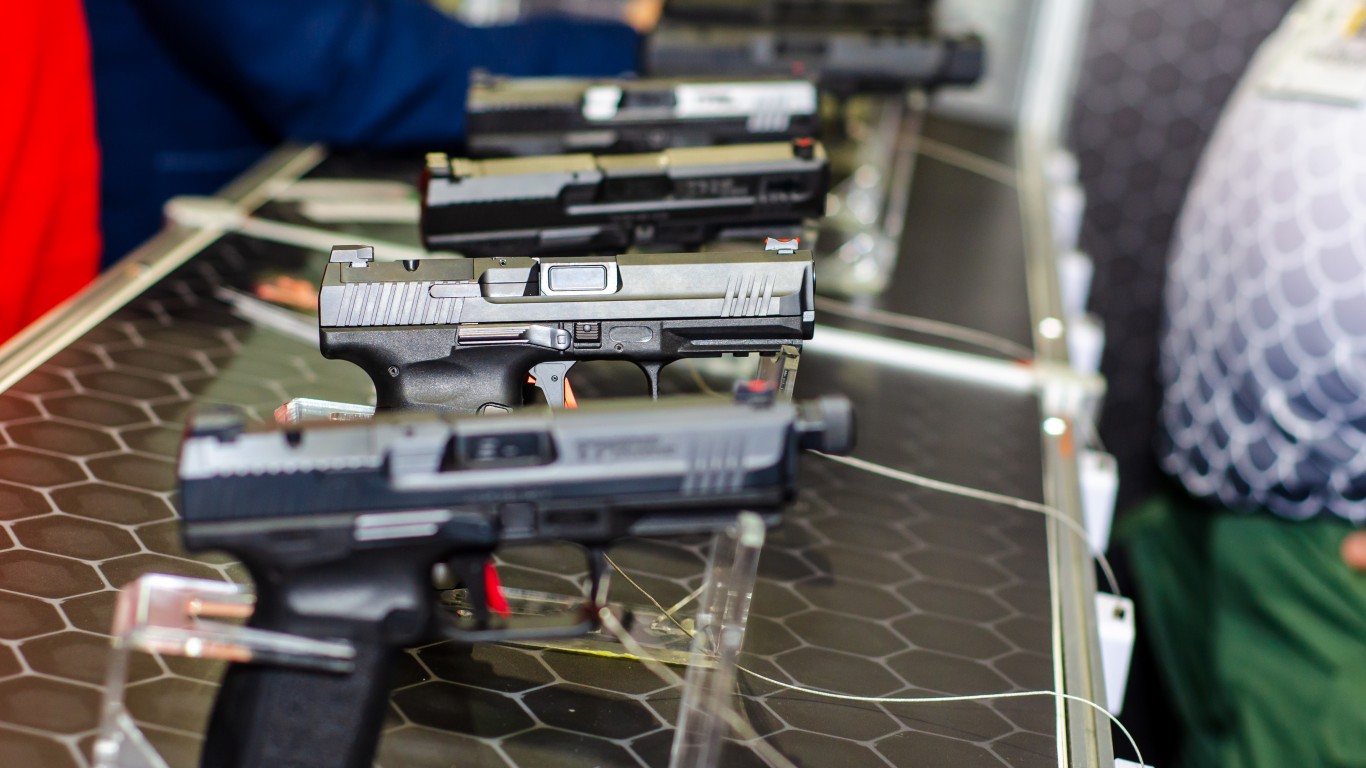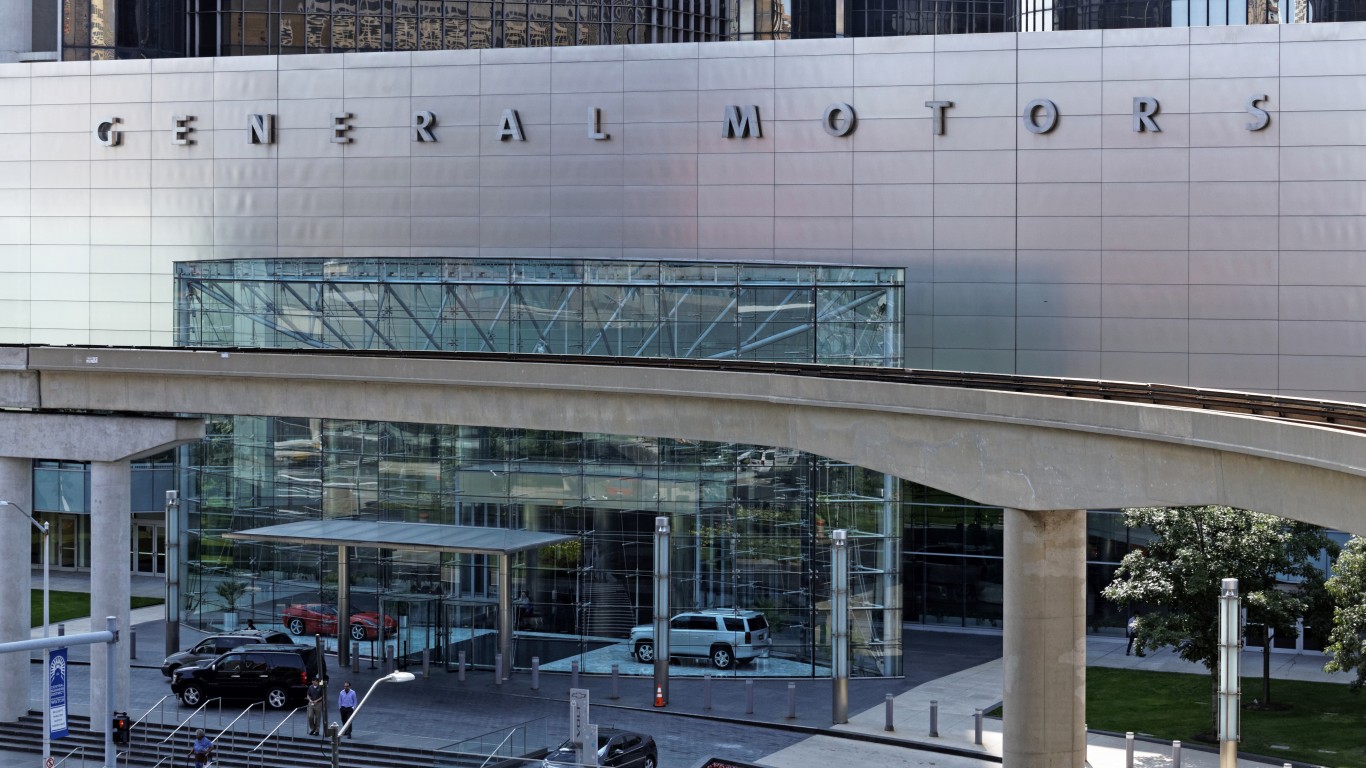
The 1960s was a very important time in the growth of the United States. Between rapid workforce growth, the rise of automation, and “Great Society” programs like Food Stamps and Medicare, the U.S. saw big changes during this time. What didn’t change much during the 1960s was the list of the American companies that dominated the business landscape.
With few exceptions, auto and oil brands held dominant positions as part of the Fortune 500 during this time. Using the Fortune 500 as a guide, let’s look at the 20 companies that dominated corporate America in the 1960s.
#1: General Motors
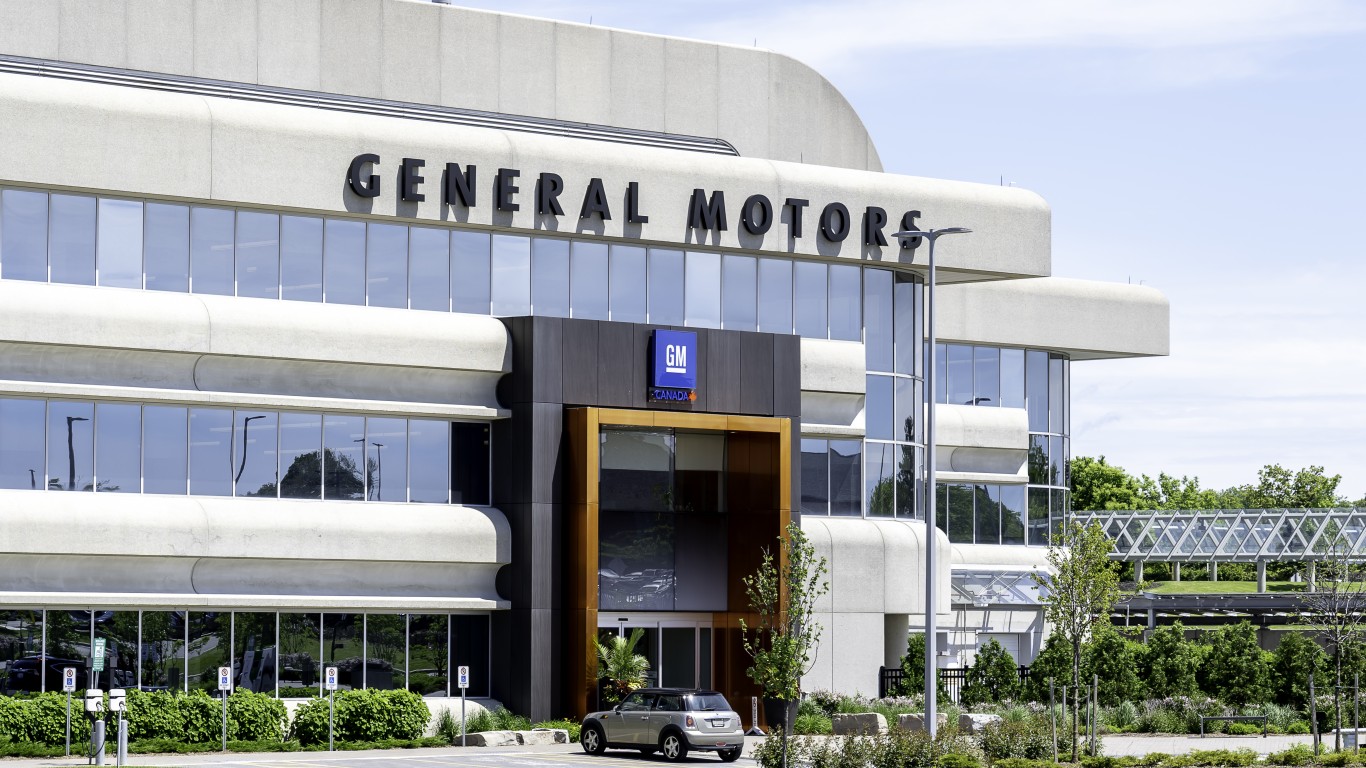
Throughout the 1960s no company in America was more dominant than General Motors. Holding the number one Fortune 500 spot the whole decade, General Motors saw major growth during this decade thanks to the introduction of compact and intermediate-sized vehicles. The introduction of family-friendly vehicles like the Chevrolet Corvair and Chevrolet Nova helped drive sales.
In addition, the release of prominent models like the Chevrolet Camaro and Pontiac GTO helped GM dominate the vehicle landscape. Boosted by large growth in the suburbs, GM was one of the most important American companies in the 1960s.
#2: International Business Machines

It wouldn’t be until the latter part of the 1960s that International Business Machines would see meteoric growth. Best known for helping to introduce technologies that would form the backbone of the computer industry we know today. Today, the company goes by IBM but during the 1960s, International Business Machines introduced the vacuum tube computer.
Until the microchip was unveiled, the vacuum tube computer helped popularize what would become general-purpose computers. IBM would establish itself as a dominant player in the electronic data processing space and would remain a Fortune 500 staple for years to come.
#3: Exxon

One of the world’s largest oil production companies, Exxon is a staple name on the Fortune 500 list. While the company would later change its name to ExxonMobil in 1999, three decades prior saw it become the most influential oil name the world over. Between Exxon’s ability to produce, refine, and distribute oil and petroleum products, it would see huge global revenue.
Other 1960’s highlights include the 1963 Exxon patent for low-emission vehicles and even patents for electric cars. Looking past the 1960s, Exxon still has significant influence and helps shape global energy markets.
#4: Goodyear Tire & Rubber

Still one of the biggest names in the tire business, Goodyear Tire & Rubber was a dominant member of corporate America in the 1960s. Along with benchmarks like hitting one billion manufactured tires in 1963, Goodyear also is said to have its tires used on more racing vehicles than any other brand.
More importantly, during the 1960s, Goodyear Tire & Rubber is best known for the development of both all-season and radial tires. Additionally, Goodyear played a significant role during this decade in chemicals, synthetic rubber, and aerospace product manufacturing. By the end of 1969, Goodyear achieved $3 billion in total sales.
#5: Ford Motor
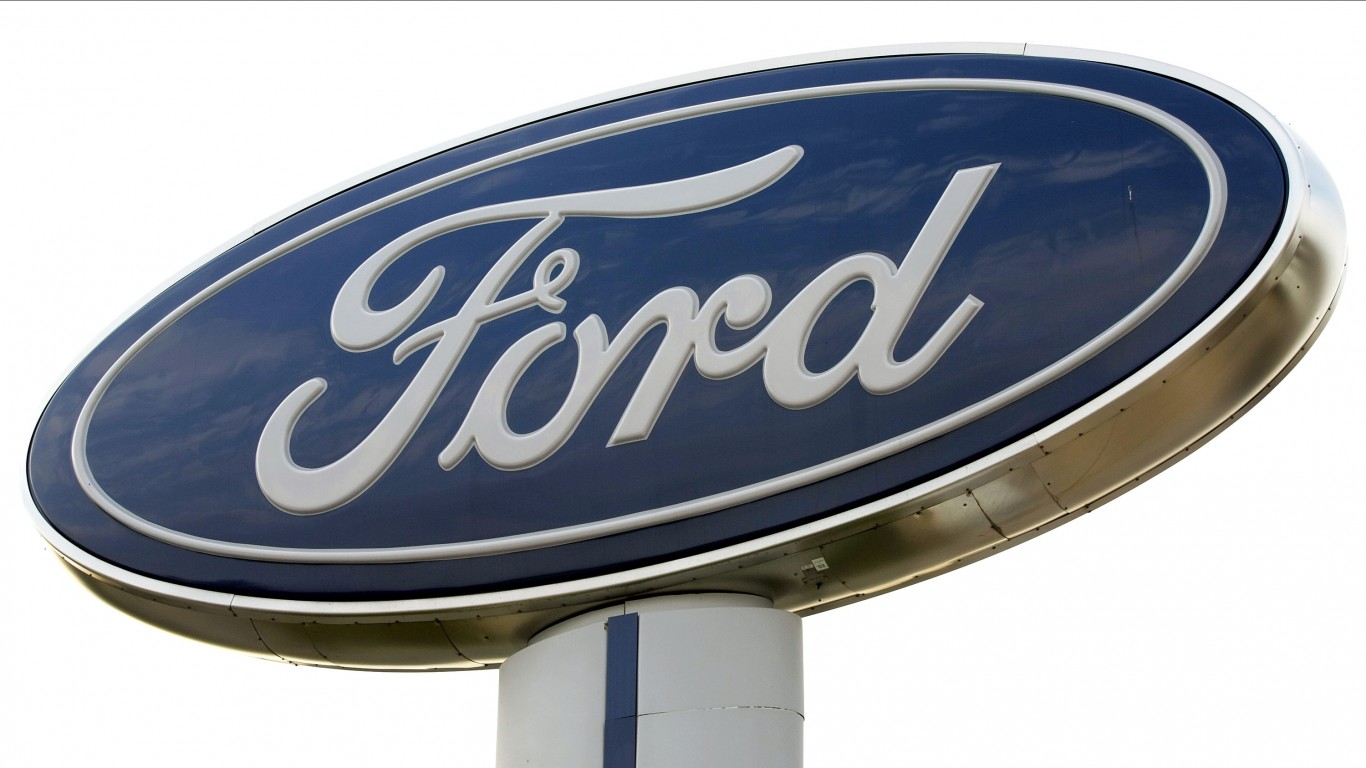
Like General Motors, Ford was one of the most dominant automobile manufacturers during the 1960s. Among the most important Ford Motor news of the 1960s was the 1964 release of the Ford Mustang. Arguably one of America’s best muscle cars, the Mustang continues to define Ford as a popular brand today.
While relatively unknown, Ford Motor Company also played a major role in putting a man on the moon. Ford’s ownership of Philco from 1961-1974 produced many computer systems that would go into designing Mission Control at NASA. Of course, Ford’s biggest achievement was personal as the Ford family won the 1966 24-hour Le Mans race and broke Ferrari’s six-year winning streak.
#6: General Electric
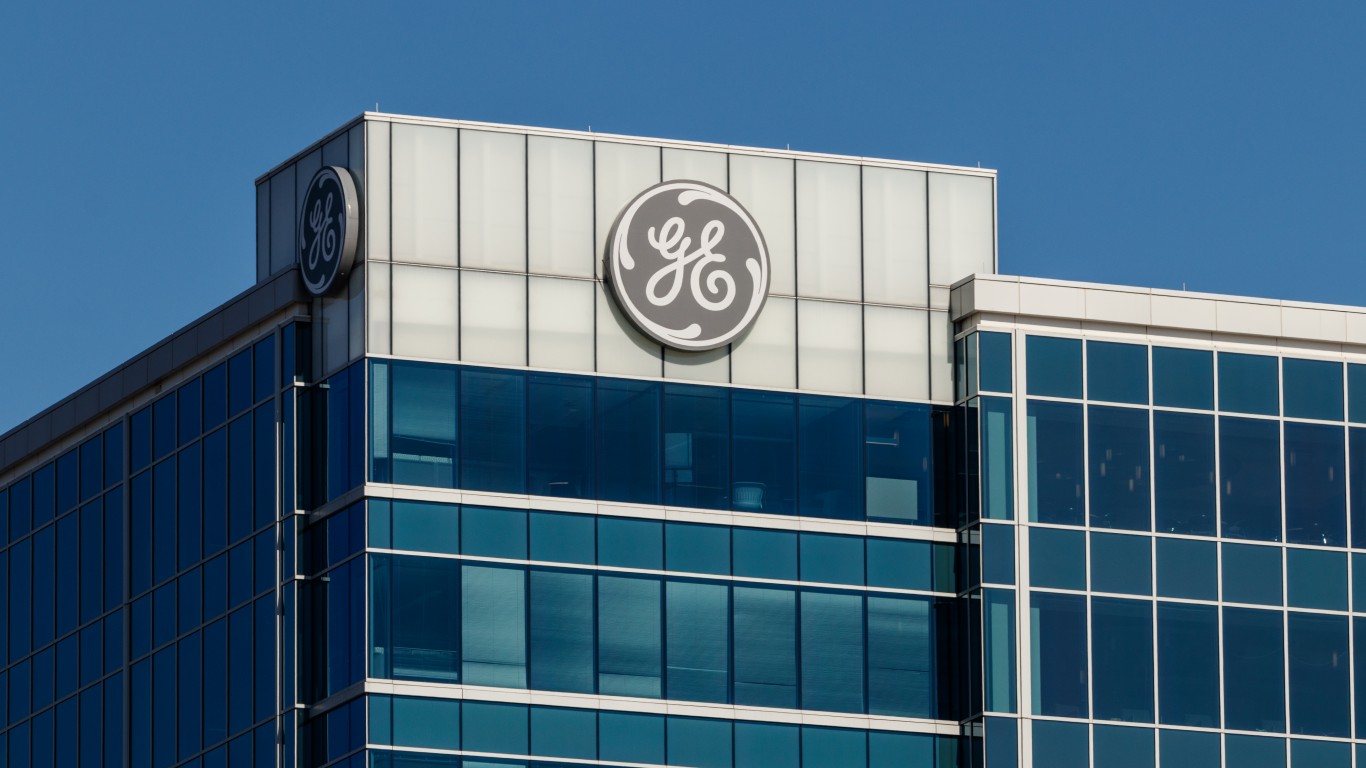
Another staple name in the corporate world, General Electric is known for being one of the 8 major computer manufacturers in the 1960s. Along with IBM, Honeywell, and RCA, General Electric or GE had a lineup of both general and special-purpose computers. Along with computers, GE also played a role in developing multiple components for the Apollo space program as well as televisions, radios, and kitchen appliances.
One of GE’s most important research developments from the 1960s would lead to the first CT scan taking place in 1972. This was a revolution in medical imaging and helped advance medical diagnosis to this day.
#7: AT&T Technologies

Yet another staple of today’s corporate world in America, AT&T Technologies was a major player in the 1960s. Along with its many achievements, AT&T released the first satellite communication system in 1962. On top of that, AT&T launched the first touch-tone telephone in 1964 and would be the first to launch the Picturephone, the first video-calling platform.
In 1969, AT&T developed the UNIX computer-operating system which laid the groundwork for much of what we know about computer operating systems today. Of course, who can forget in 1960 that AT&T developed the Dataphone, the first commercial modem. Needless to say, AT&T has been at the forefront of telecommunications for decades.
#8: Bethlehem Steel
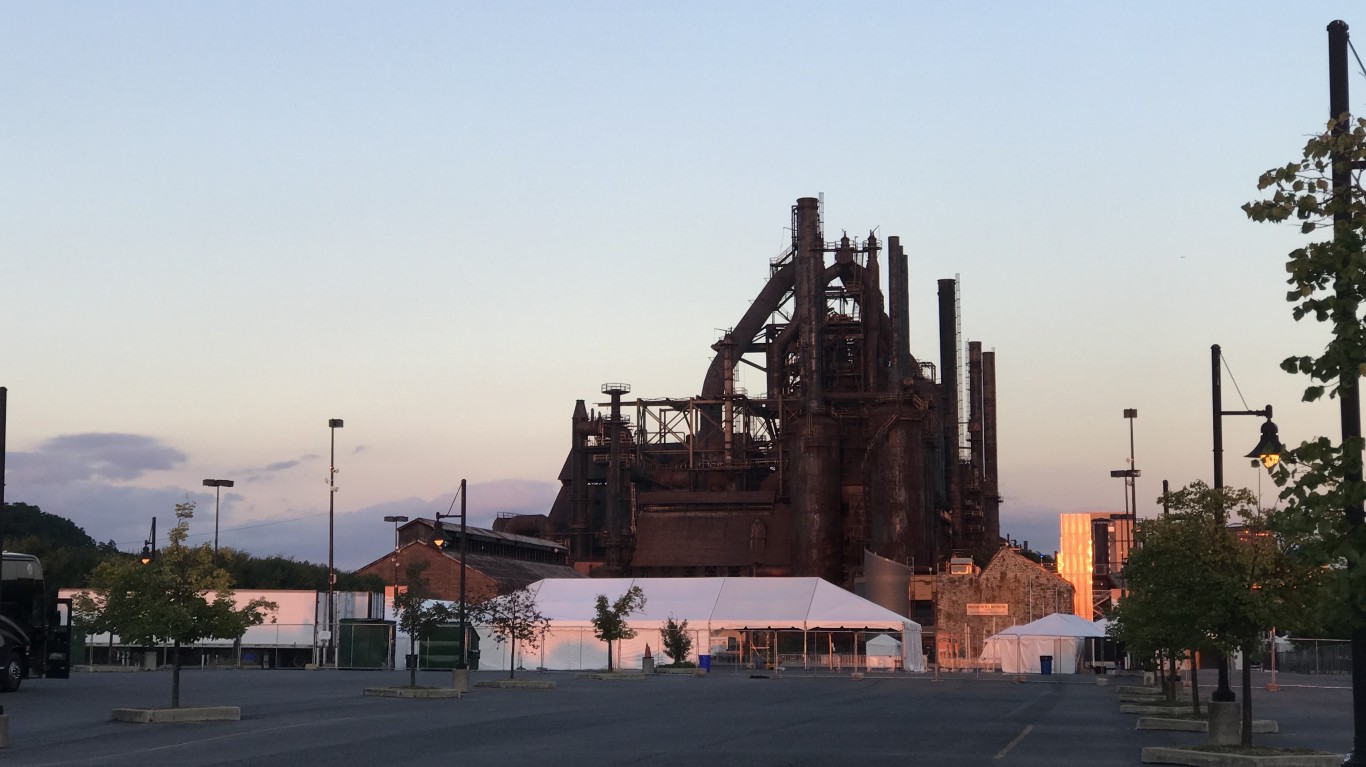
One of the most prominent steel manufacturing companies in the 1960s, Bethlehem Steel was once a corporate giant. Well before the company closed in 2003, it was the world’s largest steel producer. Among the big buildings Bethlehem Steel helped support in the 1960s were the World Trade Center, Sears Tower, and the Transamerica Pyramid in San Francisco.
Throughout the 1960s, Bethlehem Steel played a vital role in developing roads and transportation infrastructure across the U.S. Thousands of bridges, highways, and tunnels are all products of Bethlehem Steel’s work. The same goes for work on naval vessels including submarines and aircraft carriers.
#9: DuPont

The largest chemical company in America during the 1960s, DuPont remains another staple name of corporate America. During this time, DuPont introduced numerous advances in the industry including the invention of Lycra spandex. While spandex would help revolutionize fitness fashion, DuPont’s 1960’s contributions don’t end there.
To continue growing DuPont during this time, it would branch out beyond chemicals and move into pharmaceuticals, automotive components, and energy. DuPont would be a leader in developing agricultural chemicals such as pesticides that would lead to significant advancements in crop protection for U.S. farmers.
#10: CBS

Better known as CBS, the Columbia Broadcasting System was a media and entertainment titan throughout the 1960s. A major player in American broadcasting, CBS was the leading TV network during this decade. Popular shows like The Beverly Hillbillies, The Andy Griffith Show, and The Dick Van Dyke Show all aired on CBS.
The 1960s also saw the rise of 60 Minutes and CBS Evening News with Walter Cronkite. CBS also expanded sports coverage in the 1960s and went on to secure rights to NFL and college football games. These rights helped CBS to launch the idea of instant replay, which remains a critical part of sports programming today.
#11: Boeing
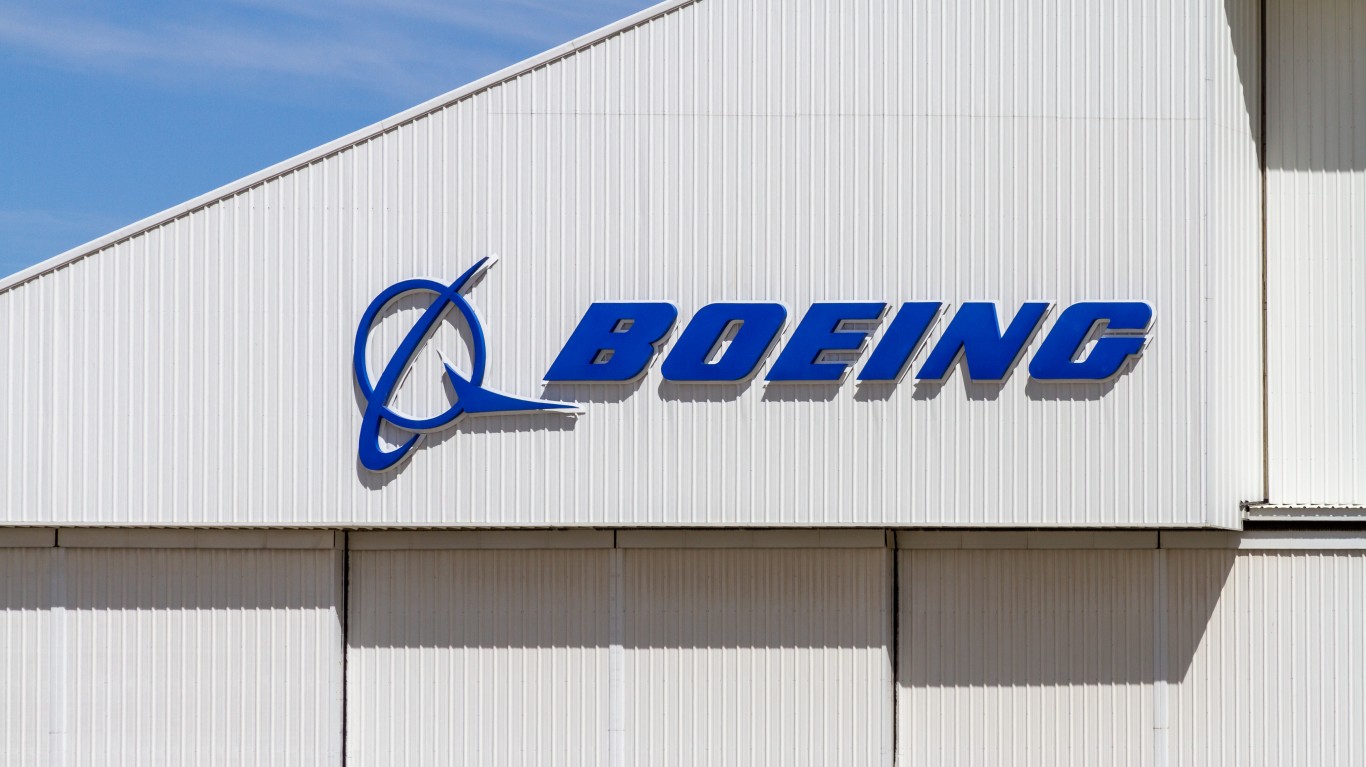
As the United States leading aerospace company, Boeing has been at the forefront of flight. The 1960s was a time of rapid growth for the brand as it saw numerous advances during this period. Without question, Boeing’s biggest achievement in the 1960s was the development and introduction of the Boeing 747.
Arguably the world’s best-known aircraft, the Boeing 747 helped the airline industry achieve larger air travel capacity. Boeing also had a strong presence in the Apollo program for NASA. Among its accomplishments was significant production work on Apollo 15, 16, and 17, all of which went to the moon.
#12: U.S. Steel
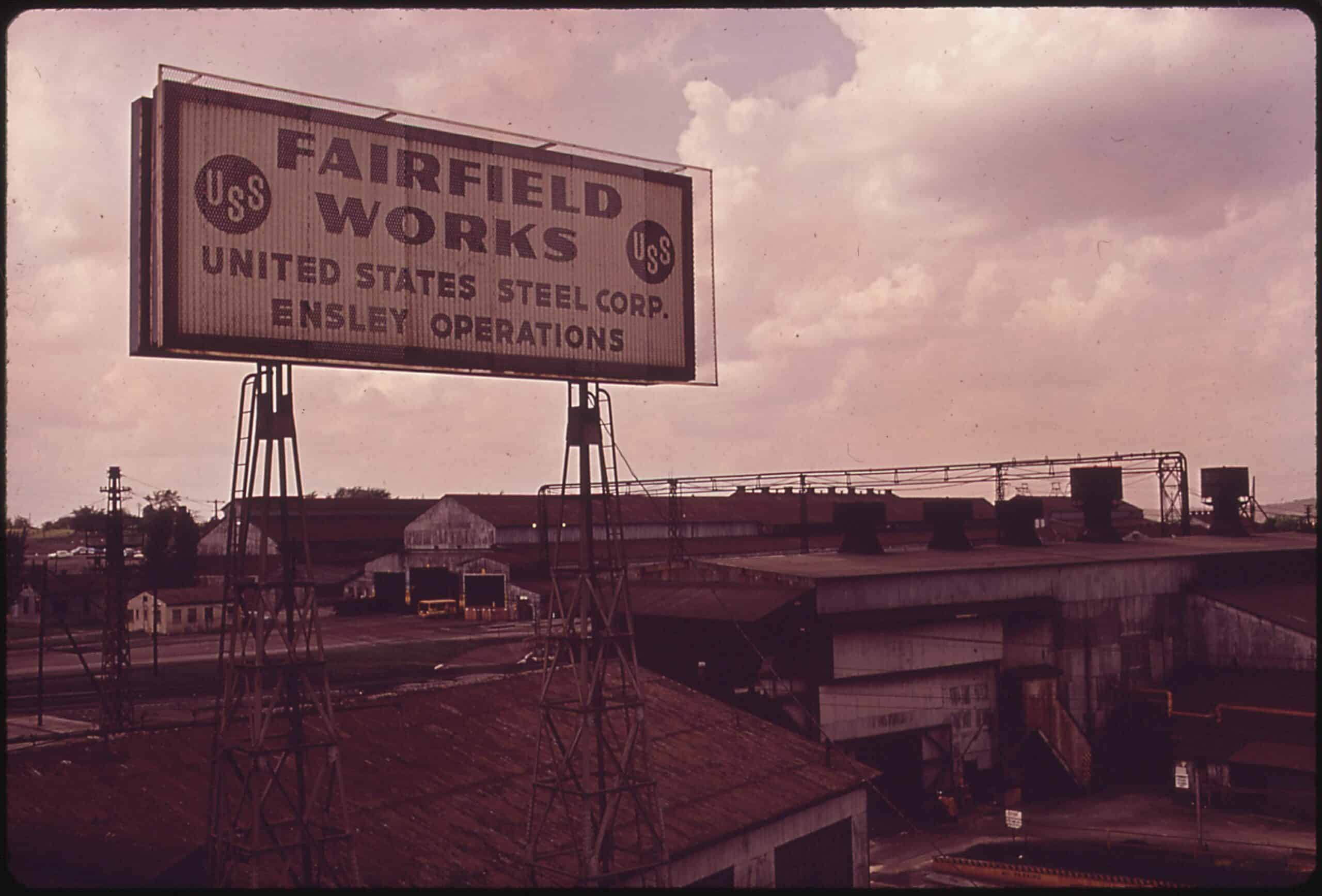
As the world’s first billion-dollar corporation, US Steel has been a staple of corporate America since its founding in 1901. Throughout the 1960s, U.S. Steel maintained its position as a steel leader but Japanese competition was growing. Another important note for U.S. Steel was that the 1969 recession had a big impact on both steel demand and company profits.
Even though the company saw headwinds, it still acquired the Mellon National Bank and Trust company, which allowed it to expand its revenue streams. The 1960s also saw President John F. Kennedy pressure the steel industry and force it to lower pricing which impacted its bottom line.
#13: Chrysler

The 1960s were something of a golden age for Chrysler as it was directly competing with both Ford and General Motors. This decade is heavily focused on Chrysler’s introduction of staple Chrysler names like the Dodge Charger, Plymouth Barracuda, and Dodge Challenger. It was Chrysler that popularized the V8 “Hemi” in the Dodge lineup which is one of the brand’s best-known engines.
The 1960s was also characterized by Chrysler’s expansion into Europe. Chrysler went on a shopping spree during this period and would take control of various French, Spanish, and British auto companies. Unfortunately, the European expansion would not go well and would be the beginning of Chrysler’s downfall.
#14: Procter & Gamble

As one of the world’s best-known brands, Procter & Gamble released some products in the 1960s that are used by millions to this day. Among the best releases in the 1960s for Procter & Gamble include Head & Shoulders Shampoo and Pampers disposable diapers in 1961. If you look one year earlier, P&G introduced Downy fabric softener in 1960 and Bounce fabric sheet softeners.
It’s safe to say Procter & Gamble remains a staple part of consumer life. As a dominant brand in the 1960s, not much has changed when you fast forward 50 years. P&G remains a global brand that plays a role in the lives of billions with its various products.
#15: RCA

While RCA is no longer a dominant corporate force in America, it was a much different world in the 1960s. During this time, RCA was a giant in the consumer electronics space with products ranging from televisions, record players, TV cameras, radios, and even phonographs. RCA even played a significant role during this decade to help advance color TV production into the 1970s.
Additionally, RCA Records also saw the launch of popular artists like Elvis Presley, Velvet Underground, and David Bowie. Less known about RCA was its attempt to break into the mainframe computer field in the 1960s, a space dominated by IBM.
#16: Kraft

As one of the biggest names in food production, it should come as no surprise to see Kraft as a corporate giant from the 1960s. Some of the biggest developments for Kraft during the 1960s occurred in 1961 when it acquired Dominion Dairies of Canada. This expansion helped Kraft produce ice cream and milk outside the U.S.
During this period, Kraft was also well known for its large marketing programs which helped expand its presence inside customer homes. Kraft was widely known for its television commercials and print ads to reach customers in all economic walks of life.
#17: Eastman Kodak

When it comes to names best associated with the camera, Eastman Kodak needs no introduction. With a lengthy history of incredible products, the 1960s saw even more growth for this famed Fortune 500 brand. Among the biggest news for Kodak during this era was the 1965 release of the Super 8 film format. In addition, Eastman Kodak played an integral role in the development of color photography throughout the 1960s.
Kodak also used its market leader position to expand into other areas to help drive future growth. Copiers and microfilm systems helped diversify the Eastman Kodak portfolio and increase revenue.
#18: Texaco
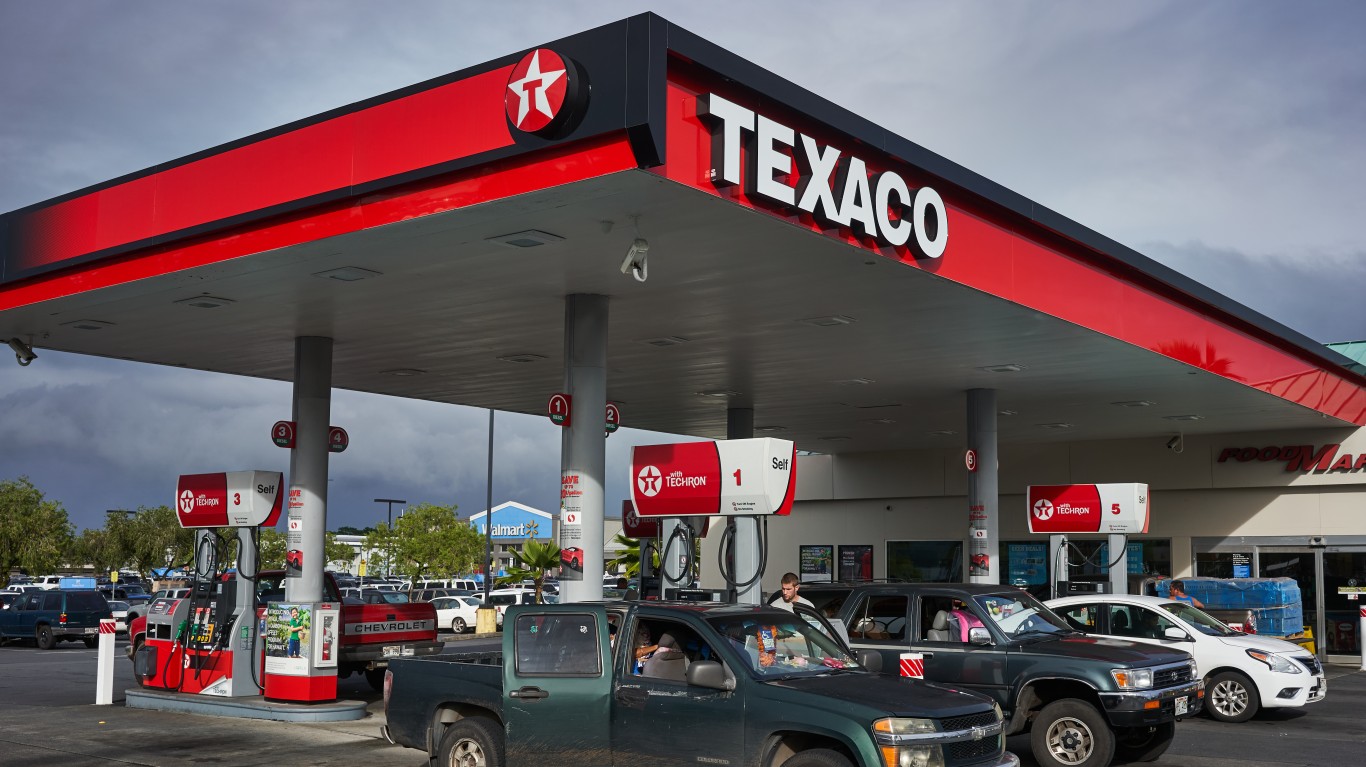
Texaco is one of the best-known oil and gas brands in the U.S. and for all the right reasons. Its 1960s campaign “Trust your car to the man who wears the star” began in 1962 and was a staple for the next decade. Texaco also saw growth in 1961 when it acquired Regal Oil Company for an opportunity to broadly increase its presence in the oil and gas industry.
Overall, the 1960s was a period of significant growth for Texaco with a handful of mergers and acquisitions. With its popular marketing campaign in full swing, Texaco was a staple of the Fortune 500 every year in this decade.
#19: ITT Inc.
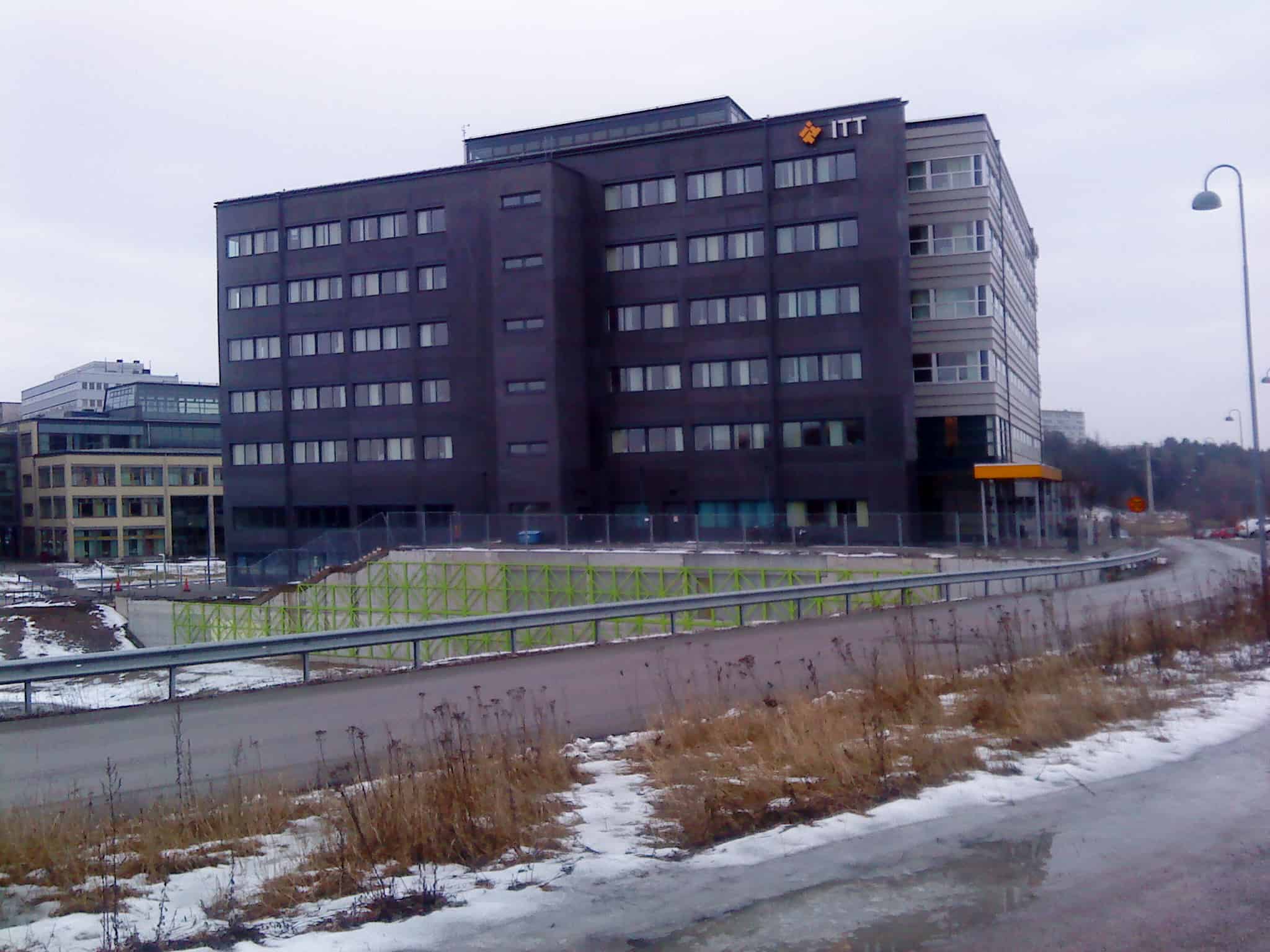
Arguably one of the least recognized names that dominated corporate America in the 1960s, ITT Inc. was a giant. One of the best ways to talk about it during the 1960s is how quickly the company grew during this period. Recognized as a conglomerate, ITT Inc. acquired hundreds of companies from various industries to ensure diverse revenue streams.
Originally known for telecommunications, ITT Inc. would expand into defense contracting, hospitality, and manufacturing through its acquisitions. As a result of all of its mergers, it also became a large player internationally with an established presence in multiple countries.
#20: General Telephone & Electronics

As one of the largest independent communications companies in the 1960s, General Telephone & Electronics would grow significantly over this decade. With both residential and business customers all over the country, GTE would purchase Western Utilities Corporation and Hawaiian Telephone Company. By the end of the decade, GTE had over 10 million phones in the hands of customers.
In the 60s GTE would include consumer electronics and electric components among its revenue streams to fuel further expansion. Ultimately, GTE would merge with Bell Atlantic in June 2000 and would adopt an immediately recognizable name, Verizon Communications.
Take Charge of Your Retirement In Just A Few Minutes (Sponsor)
Retirement planning doesn’t have to feel overwhelming. The key is finding expert guidance—and SmartAsset’s simple quiz makes it easier than ever for you to connect with a vetted financial advisor.
Here’s how it works:
- Answer a Few Simple Questions. Tell us a bit about your goals and preferences—it only takes a few minutes!
- Get Matched with Vetted Advisors Our smart tool matches you with up to three pre-screened, vetted advisors who serve your area and are held to a fiduciary standard to act in your best interests. Click here to begin
- Choose Your Fit Review their profiles, schedule an introductory call (or meet in person), and select the advisor who feel is right for you.
Why wait? Start building the retirement you’ve always dreamed of. Click here to get started today!
Thank you for reading! Have some feedback for us?
Contact the 24/7 Wall St. editorial team.
